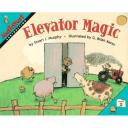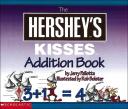The following information includes resources that will be helpful when teaching basic addition and subtraction facts. The information covers the Virginia Standards of Learning for math 1.5. With the help of these resources, students will develop strategies helpful for fact recall, develop an understanding of the addition and subtraction relationship, and develop fluency with basic number combinations for addition and subtraction. These books and websites should be used in combination with instructional activities and assessments.
Recommended books:
12 Ways to Get to 11 written by Eve Merriam and illustrated by Bernie Karlin
1 2 3 4 5 6 7 8 9 10 __ 12 What happened to 11?
Is it in the magician’s hat? Maybe it’s in the mailbox or hiding in the jack-o’-lantern? Don’t forget to look in the barnyard where the hen awaits the arrival of her new little chicks. Could that be where eleven went?
Eve Merriam and Bernie Karlin take young readers on a counting adventure as they demonstrate twelve witty and imaginative ways to get to eleven.
Elevator Magic written by Stuart J. Murphy and illustrated by G. Brian Karas
When the elevator goes down, the subtraction starts and so does the magic. Ben sees crazy things every time the door opens. Ride along as he subtracts his way down to the lobby, and decide for yourself if it's elevator magic.
Math for All Seasons written by Gregory Tang and illustrated by Harry Briggs
Your challenge is to find the sum without counting one by one. Why not count? It’s much too slow –Adding is the way to go! Make clever groups before you start –Then add them in a way that’s smart! MATH FOR ALL SEASONS will challenge every kid — and every parent — to open their minds and solve problems in new and unexpected ways. By looking for patterns, symmetries, and familiar number combinations within eye-catching pictures, math will become easier, quicker, and more fun than anyone could have imagined!
The Hershey’s Kisses Addition Book written by Jerry Pallotta and illustrated by Rob Bolster
What better way to introduce simple addition concepts than with delicious Hershey¹s Kisses? To illustrate math concepts, this book features a cast of miniature clowns struggling under the weight of life-sized Hersheys Kisses.
The Action of Subtraction written by Brian P. Cleary and illustrated by Brian Gable
The author has used the format of his popular Words Are CATegorical books (Millbrook) to look at mathematical functions. Subtraction is explained in rhyming text and simple, silly cartoons with excellent examples that range from angry bulldogs, hornets, and bowling pins to pieces of birthday cake, sports time-outs, and stuffed animals. The text is actually a rap that would be fun for students to memorize and perform. The illustrations are colorful and attractive, and an explanation of the equals sign is included. Despite a bit of filler at the end, this book has value in the mathematic section of libraries and will find a place in classrooms with teachers who want to appeal to a variety of learning styles.
Web annotations:
The Little Animals Activity Center: Offers adding and subtracting at 3 levels.
QUIA: Addition facts to 18 : Choose flashcards, matching, concentration or word search to practice these facts.
Princess Math: Choose your operation ( + , – , x , / ). Pick a Tiara and a Gown. Make sure the numbers for each fit the equation on the upper right. Each level adds new tiaras and gowns. Pass all ten levels and enter your score. You win 3 minutes to dress up the princess any way you like!
Cross the swamp: choose add/subtract or mult/divide and # level to help the monkey cross the swamp.
Fact Families: click and drag the given numbers to create fact families.
Additional resources:
Cookie Cutter Addition : This lesson plan uses play dough and cookie cutters to teach math.
Let's Learn Those Facts:
In this lesson, students display their knowledge of properties of objects for sorting and creating patterns. They also demonstrate an understanding of the commutative property and model addition and subtraction of whole numbers using different representations
Teaching Addition: Lesson on Addition for a first grade classroom. At the end of this lesson the students should be able to add different objects together to find out how many objects there are total
The students should be able to explain up to 3 different reasons that being able to add is important. The lesson uses manipulatives and explains different ways we can use addition in our everyday lives.
Teaching subtraction with base 10 blocks:
Base 10 blocks can make abstract ideas like place value and regrouping visible and tangible for your primary school students when the time comes to teach subtraction.




